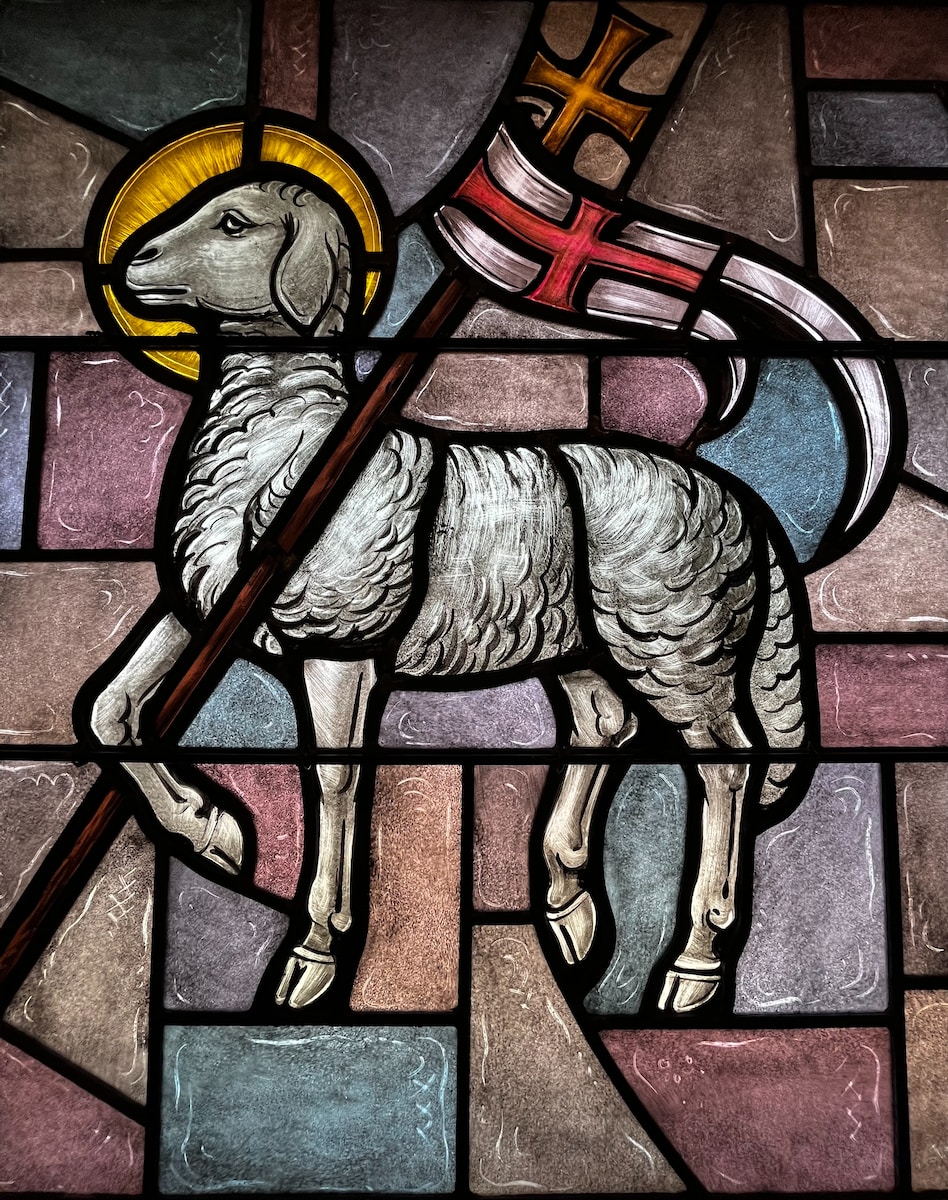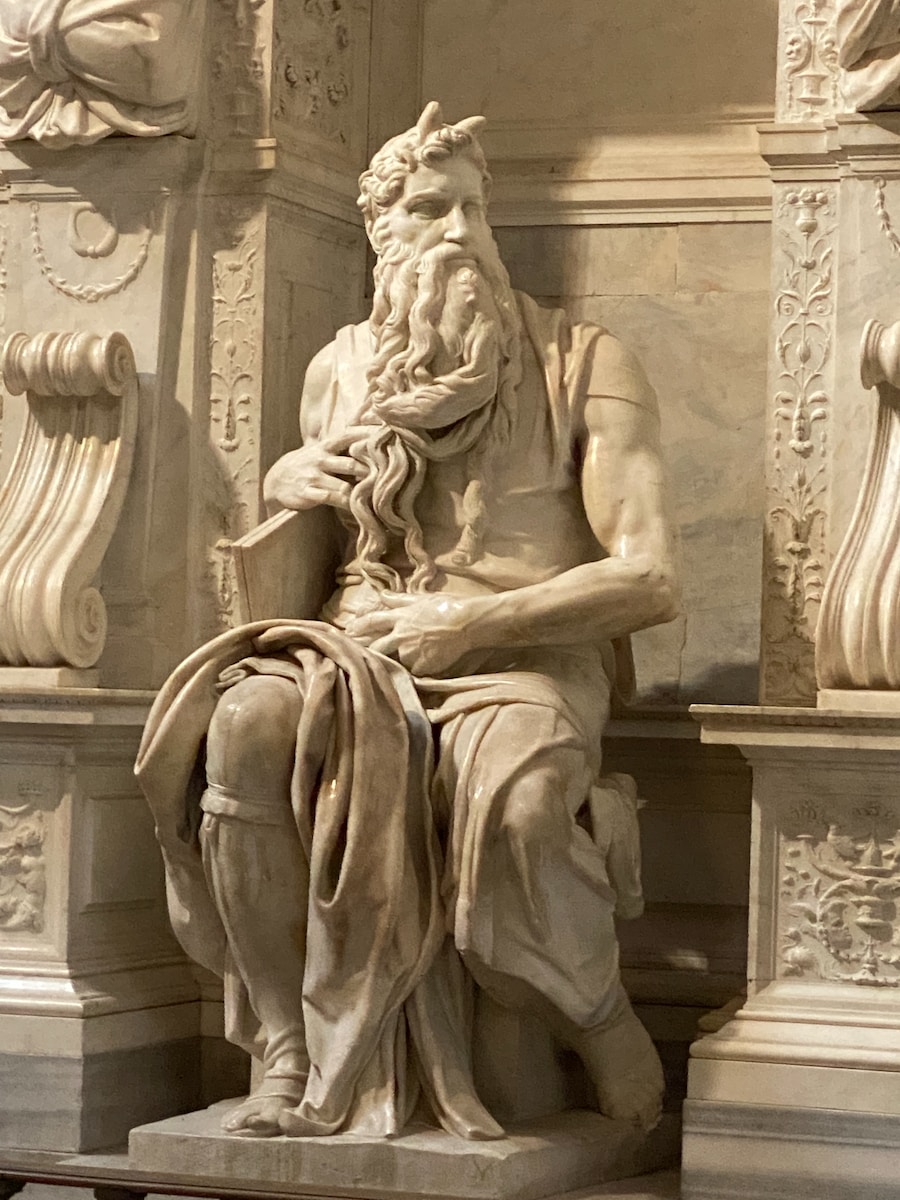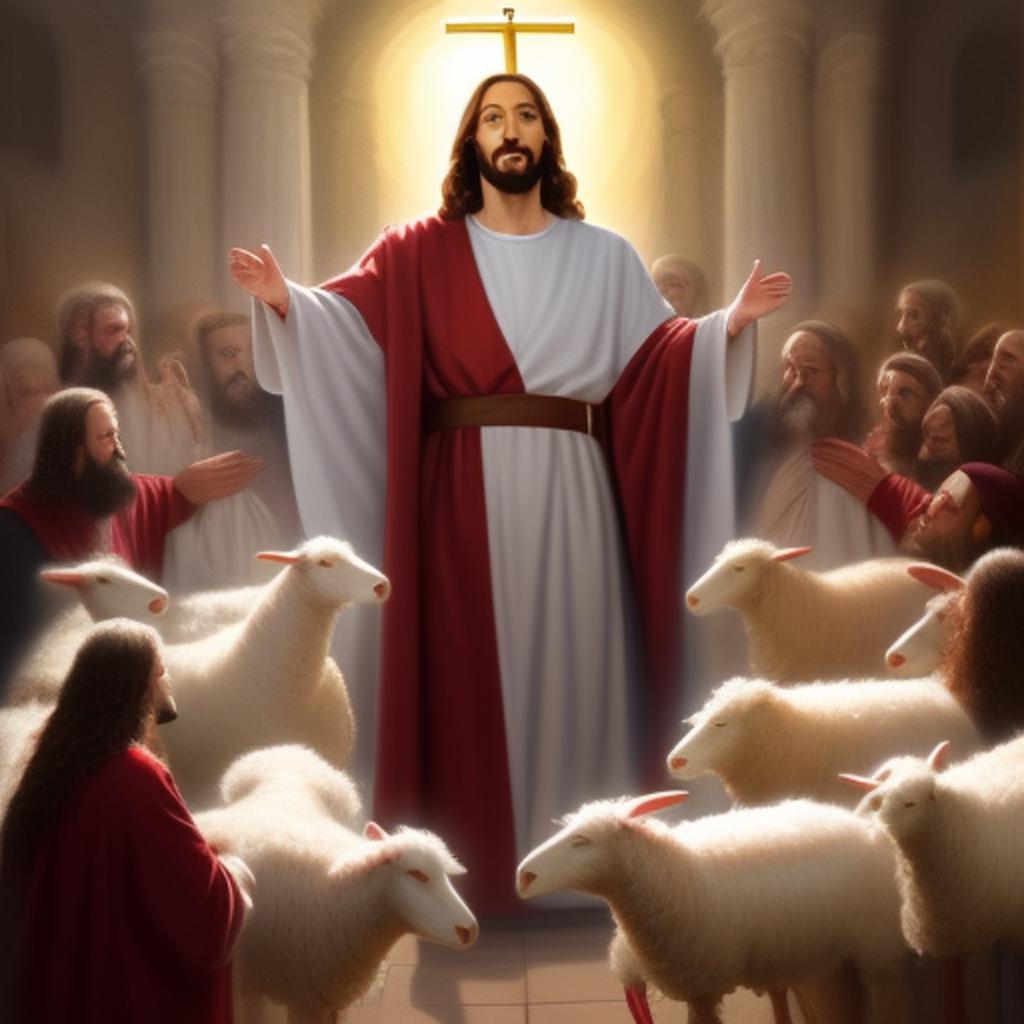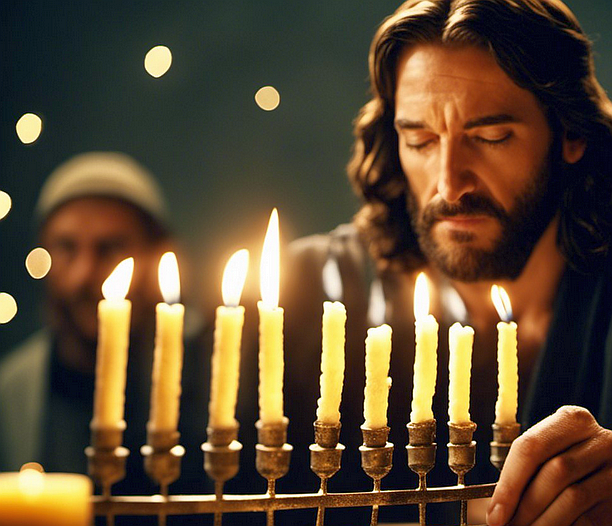Introduction
Leviticus 1 holds significant relevance in understanding the foreshadowing and fulfillment of Messianic prophecies through Jesus. By examining the connections between Leviticus 1 and Jesus, we can gain a deeper understanding of the sacrificial system and its ultimate fulfillment. Leviticus 1 is a pivotal chapter within the book, outlining the burnt offering, one of the primary types of sacrifices in the Old Testament. The instructions in Leviticus 1 emphasize the requirement of a male animal without blemish, symbolizing the offering’s purity and value. This requirement communicated the importance of presenting the best to God, reflecting a heart of reverence and worship.
The burnt offering is a voluntary act of worship, highlighting the importance of drawing near to God through sacrifice. This act of sacrifice was not to be taken lightly, as it required the surrender of a valuable animal. The burnt offering was an opportunity for the worshipper to express their devotion and commitment to God. It was a physical demonstration of their desire to seek forgiveness and reconciliation with Him. Leviticus as a whole contains direct speech from God and is at the heart of the Pentateuch. The detailed instructions in this book served as a guide for the Israelites, outlining the proper way to approach God, maintain purity, and have a right relationship with Him.
Overview of Leviticus 1
Leviticus 1 is a pivotal chapter within the book, outlining the burnt offering, one of the primary types of sacrifices in the Old Testament. The instructions in Leviticus 1 emphasize the requirement of a male animal without blemish, symbolizing the offering’s purity and value. This requirement communicated the importance of presenting the best to God, reflecting a heart of reverence and worship.
The burnt offering is a voluntary act of worship, highlighting the importance of drawing near to God through sacrifice. This act of sacrifice was not to be taken lightly, as it required the surrender of a valuable animal. The burnt offering was an opportunity for the worshipper to express their devotion and commitment to God. It was a physical demonstration of their desire to seek forgiveness and reconciliation with Him.
Leviticus as a whole contains direct speech from God and is at the heart of the Pentateuch. The detailed instructions in this book served as a guide for the Israelites, outlining the proper way to approach God, maintain purity, and have a right relationship with Him.
In Leviticus 1, God provides specific instructions for the burnt offering, stressing the importance of offering a male animal without blemish. The offering was to be presented at the entrance of the tent of meeting, and the worshipper was required to lay their hand on the head of the animal, symbolizing the transfer of sin and guilt. The worshipper would then slaughter the animal, and the priest would sprinkle the blood on the sides of the altar. The entire animal, except for the hide, would be consumed by fire, symbolizing complete surrender and devotion to God. This act of surrender and the ascending smoke represented the offering’s acceptance by God and the restoration of a broken relationship.
Symbolism and Foreshadowing in Leviticus 1
The burnt offering described in Leviticus 1 holds profound symbolism and foreshadowing regarding Jesus as the ultimate sacrifice. The entire victim of the burnt offering, except for the hide, is consumed by fire, symbolizing complete surrender and devotion to God. This act of surrender and the ascending smoke represent the offering’s acceptance by God and the restoration of a broken relationship.
The burnt offering foreshadows Jesus’ sacrificial death on the cross, where He offered Himself completely for the salvation of humanity. Just as the animal was consumed by fire, Jesus willingly gave up His life in obedience to God’s plan. His sacrifice represents the ultimate act of surrender and devotion to reconcile humanity to God. The ascending smoke from the burnt offering symbolizes the acceptance of Jesus’ sacrifice by God, signifying the restoration of a broken relationship between God and humanity.
The burnt offering also symbolizes the need for atonement and the transfer of sin and guilt onto an innocent substitute. In Leviticus 1, the worshipper would lay their hand on the head of the animal, symbolizing the transfer of sin and guilt. This act pointed to the future sacrifice of Jesus, who would bear the sins of humanity on the cross. In the New Testament, the apostle Peter refers to Jesus as the “Lamb without blemish or defect” (1 Peter 1:19), solidifying the connection between the burnt offering and Jesus’ sacrificial death.
Connection between Leviticus 1 and Jesus
Leviticus 1 provides a profound connection to Jesus as the ultimate fulfillment of the sacrificial system. Jesus perfectly embodies the requirements set forth in Leviticus 1, being a male without blemish, offering Himself willingly. He fulfilled the law of the burnt offering by surrendering His life entirely, becoming the ultimate sacrifice for the atonement of sins. The burnt offering’s purpose was to draw near to God and worship Him, and Jesus’ sacrifice achieves this in the most profound way.
Moreover, Leviticus 1 emphasizes the importance of presenting an offering that is without blemish. Jesus, being sinless, perfectly fulfilled this requirement, making Him the only acceptable sacrifice for the sins of humanity. He became the unblemished Lamb of God, taking upon Himself the sins of the world and offering salvation to all who believe in Him.
Through Leviticus 1, we see a clear connection between the sacrificial system of the Old Testament and Jesus’ redemptive work on the cross. The burnt offering foreshadowed and pointed to the ultimate sacrifice of Jesus, who fulfilled the requirements of the law and brought about the reconciliation between God and humanity.
The connection between Leviticus 1 and Jesus extends beyond the burnt offering. The peace offering, sin offering, and other types of offerings and sacrifices described in Leviticus find their ultimate fulfillment in Jesus. Jesus became the perfect offering for sin, the ultimate source of peace, and the fulfillment of all the laws and prophecies regarding the Messiah.
Jesus as the Ultimate Sacrifice
Leviticus 1 points to Jesus as the ultimate sacrifice, surpassing all previous offerings and sacrifices in the Old Testament. Jesus’ death on the cross serves as the perfect atonement for the sins of humanity, bringing reconciliation between God and humanity. Through His sacrifice, Jesus fulfilled the law of the offerings mentioned in Leviticus 1, demonstrating His role as the Lamb of God.
In the Old Testament, the burnt offering was a significant act of worship, symbolizing the offering’s complete surrender to God. It required the sacrifice of a valuable animal, representing the gravity of sin and the need for atonement. However, in Jesus, we see the ultimate sacrifice—a sacrifice that surpasses the burnt offerings of the past.
Jesus’ sacrifice on the cross was not only a physical act but a spiritual one as well. His death paid the price for sin, offering forgiveness and redemption to all who believe in Him. Jesus’ sacrifice on the cross was the culmination of God’s plan to restore humanity’s broken relationship with Him.
Through His sacrificial death, Jesus became the unblemished Lamb of God, offering Himself as the ultimate sacrifice for the sins of humanity. Just as the burnt offering was consumed by fire, Jesus willingly gave up His life, surrendering Himself completely to God’s plan. His sacrifice on the cross was the ultimate act of surrender and devotion, providing a way for humanity to be reconciled with God.
Fulfillment of Messianic Prophecies in Jesus
The Old Testament contains numerous Messianic prophecies that find their fulfillment in Jesus, including those related to Leviticus 1. Leviticus 1 serves as a foreshadowing of Jesus’ sacrificial death, fulfilling the prophecies regarding the Messiah as the ultimate sacrifice. The burnt offering, as described in Leviticus 1, aligns with the prophecies of a blameless and pure Messiah who would offer Himself for the salvation of humanity. Jesus’ fulfillment of Messianic prophecies in Leviticus 1 solidifies His identity as the long-awaited Messiah.
Throughout the Old Testament, God revealed His plan to send a Messiah who would bring salvation and redemption. Leviticus 1, with its emphasis on the burnt offering, played a significant role in foreshadowing the sacrificial death of Jesus. The offering of a male animal without blemish in Leviticus 1 symbolized the coming of a blameless and pure Messiah who would offer Himself as the ultimate sacrifice for sin.
Jesus’ life and ministry perfectly fulfilled these Messianic prophecies. He was born of a virgin, lived a sinless life, and ultimately offered Himself as the perfect sacrifice on the cross. Leviticus 1 serves as a powerful connection between the Old Testament prophecies and the person of Jesus, affirming His identity as the long-awaited Messiah.
The fulfillment of Messianic prophecies in Jesus extends beyond Leviticus 1. Throughout the Old Testament, various prophecies point to Jesus as the coming Messiah, the Savior of the world. These prophecies include His birth in Bethlehem (Micah 5:2), His suffering and death (Isaiah 53), and His resurrection (Psalm 16:10). Jesus’ life, death, and resurrection perfectly fulfill these prophecies, confirming His role as the long-awaited Messiah.
The Role of Atonement in Leviticus 1
Atonement plays a central role in Leviticus 1, as the burnt offering serves as a means of restoring a broken relationship with God. The Israelites, through the sacrifice of an unblemished animal, sought forgiveness and reconciliation with God. This act of atonement allowed them to draw near to God and experience His presence.
Jesus’ sacrificial death on the cross serves as the ultimate atonement for the sins of humanity, surpassing the temporary atonement provided by animal sacrifices. The burnt offering in Leviticus 1 highlighted the necessity of atonement for drawing near to God, and Jesus’ sacrifice fulfills this requirement once and for all.
Through His sacrificial death, Jesus provided a way for humanity to be reconciled with God. His atonement covers all sins and offers forgiveness to all who believe in Him. Jesus’ sacrifice on the cross is the ultimate act of atonement, providing the means for humanity to draw near to God and experience His love, grace, and mercy.
The atonement provided by Jesus’ sacrifice on the cross is not limited to a particular time or people. It is available to all who believe in Him, regardless of their background or sins. The apostle Paul writes, “For there is no distinction: for all have sinned and fall short of the glory of God, and are justified by his grace as a gift, through the redemption that is in Christ Jesus” (Romans 3:22-24). Through Jesus’ atoning sacrifice, all who believe in Him can experience forgiveness and reconciliation with God.
Jesus as Our Peace and Thanksgiving
The peace offering mentioned in Leviticus 1 symbolizes Jesus as our source of peace and thanksgiving. Jesus fulfilled the law of the peace offering by reconciling humanity with God and providing peace that surpasses all understanding. Through His sacrifice, believers can experience gratitude and thanksgiving, recognizing Jesus as the ultimate gift from God.
In Leviticus 1, the peace offering was a voluntary act of worship, expressing thanksgiving and devotion to God. It was an opportunity for the worshipper to share in a communal meal with God, symbolizing the restoration of a right relationship and fellowship with Him.
Jesus’ sacrifice on the cross embodies the peace offering in its truest sense. Through His death and resurrection, Jesus reconciled humanity with God, restoring the broken relationship caused by sin. He became the ultimate source of peace, bringing wholeness and harmony to our lives. In Jesus, we find true peace that transcends all circumstances and surpasses human understanding.
Jesus’ sacrificial act on the cross evokes thanksgiving and gratitude in the hearts of believers. His selfless sacrifice demonstrates the depth of God’s love and mercy towards humanity. As we reflect on Jesus’ sacrifice, we are filled with a sense of awe and reverence, offering our heartfelt thanksgiving for the salvation and peace He has provided.
Yeshua as the Offering for Sin
Leviticus 1 introduces the sin offering, emphasizing the mandatory nature of atonement for those who have sinned. Jesus became the ultimate sin offering, offering Himself as a sacrifice to atone for the sins of humanity. His sacrificial death on the cross covers all sins and provides forgiveness, setting believers free from guilt and condemnation. Leviticus 1’s depiction of the sin offering finds its fulfillment in Jesus’ redemptive work on the cross.
The sin offering described in Leviticus 1 highlighted the seriousness and consequences of sin. It served as a means for individuals to seek forgiveness and restoration with God. The offering of an unblemished animal symbolized the transfer of sin and guilt onto the innocent substitute, providing a temporary covering for sin.
Jesus, in His sacrificial death on the cross, became the ultimate sin offering. He took upon Himself the sins of the world, bearing the guilt and punishment that humanity deserved. Through His death and resurrection, Jesus provided complete forgiveness and redemption for all who believe in Him. His sacrifice on the cross offers liberation from the power of sin and the assurance of eternal life.
The sin offering in Leviticus 1 also points to the need for repentance and turning away from sin. The worshipper was required to acknowledge their sin and bring the offering to the priest for atonement. Similarly, Jesus calls us to repentance and faith in Him. He offers forgiveness and restoration to all who come to Him in repentance, acknowledging their need for His sacrifice on the cross.
Conclusion
Leviticus 1 serves as a significant chapter in the Old Testament, providing detailed instructions for offerings and sacrifices. Through its symbolism and foreshadowing, Leviticus 1 points to Jesus as the ultimate sacrifice and fulfillment of Messianic prophecies. Jesus’ sacrificial death on the cross perfectly fulfills the requirements and symbolism found in Leviticus 1, providing atonement for sins and reconciliation with God.
The burnt offering, peace offering, sin offering, and other types of offerings and sacrifices described in Leviticus 1 find their ultimate fulfillment in Jesus. Jesus became the unblemished Lamb of God, offering Himself willingly as the perfect sacrifice for the sins of humanity. Through His death on the cross, He provided forgiveness, redemption, and reconciliation for all who believe in Him.
As we reflect on the connections between Leviticus 1 and Jesus, we gain a deeper understanding of God’s plan for salvation. Leviticus 1 serves as a foreshadowing of Jesus’ sacrificial death, pointing to His role as the long-awaited Messiah. Through Jesus, we find forgiveness, peace, and the opportunity to draw near to God. May we continually marvel at the depth of God’s love and the significance of Jesus’ sacrifice on the cross.
#Leviticus1Foreshadowing #MessiahFulfillment #SacrificialAtonement #BiblicalInterpretation #PropheticRevelation #FaithAndBelief #BiblicalSymbolism #RedemptiveNarrative #ReligiousUnderstanding #DivineFulfillment #TorahExploration #OldTestamentRelevance #NewTestamentLink #ChristianTheology #FaithJourney #ReligiousScholarship #JesusAsSacrifice #SpiritualInsights #BiblicalExegesis #SacrificialAtonementInJesus



